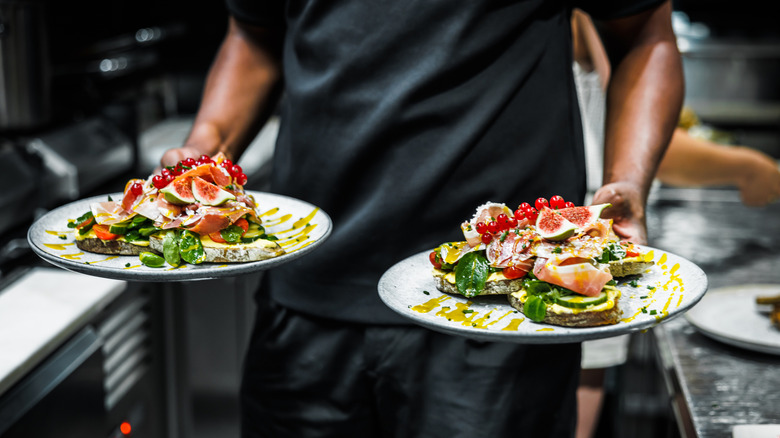What Is A Soft Opening And Why Do Restaurants Have Them?
You may have heard about restaurant soft openings from a new eatery near where you live or a celebrity chef debuting a fancy dining spot. (Hopefully not one of the massive celeb restaurant flops.) But what does the term actually mean? Maricel Gentile, chef and owner of Maricel's Kitchen and author of "Maricel's Simply Asian Cookbook," spoke to The Takeout about what a soft opening is and why restaurants have them.
Soft openings are usually held for a smaller number of people to come and dine, often by invite, before a restaurant officially opens. "Soft openings are a rehearsal," Gentile told us. "They let teams test kitchen timing, iron out menu kinks, train front-of-house on service flow, and get real feedback on dishes before critics and full crowds arrive." The food is, of course, one of the main things to be tweaked for issues like food not coming out at the right temperature.
"Menus often get trimmed or rejiggered based on what sells, what cooks reliably, or what needs more prep work," Gentile continued. "Kitchen layouts may shift, seating configurations might change, even lighting or music tweaks can happen based on guest feedback or staff observations." The benefit of making all these changes during a soft opening is it allows the team to identify problems "without risking brand reputation."
Another benefit to a soft opening is publicity. "Exclusive invites to friends, family, and local influencers can create word-of-mouth hype," Gentile explained. "Teasers on social media from those early guests can spark curiosity and anticipation before the big public launch. It frames the restaurant as special and in-the-know."
How do soft openings work?
Soft openings (also called soft launches) commonly take place within two weeks before a restaurant's grand opening and can run as short as just a couple of days. (A restaurant launching without one is called a hard opening.) Whatever its length, a soft opening has to allow enough time for any changes based on the trial period to be implemented. They can go longer, but a soft opening that's too extended before the official debut risks public interest fading.
As Gentile described, friends and family of the owners and staff are usually invited for soft openings as well as influencers and other media or critics. Invitees can also be people from local businesses or community leaders. Doors are also sometimes opened up to members of the public.
The restaurant may serve either the full menu or a reduced one that highlights certain items like signature dishes. There could also be different menus tried out on different days during the trial run. Prices during a soft opening may be the full cost of the restaurant's menu, but sometimes they'll offer reduced prices or even no cost for the food at all. Soft openings are all about learning what works and what doesn't. So, unless it plans to be a restaurant that's mean to its customers on purpose, the eatery will often ask attendees for feedback either in person or with something like an online survey after.

